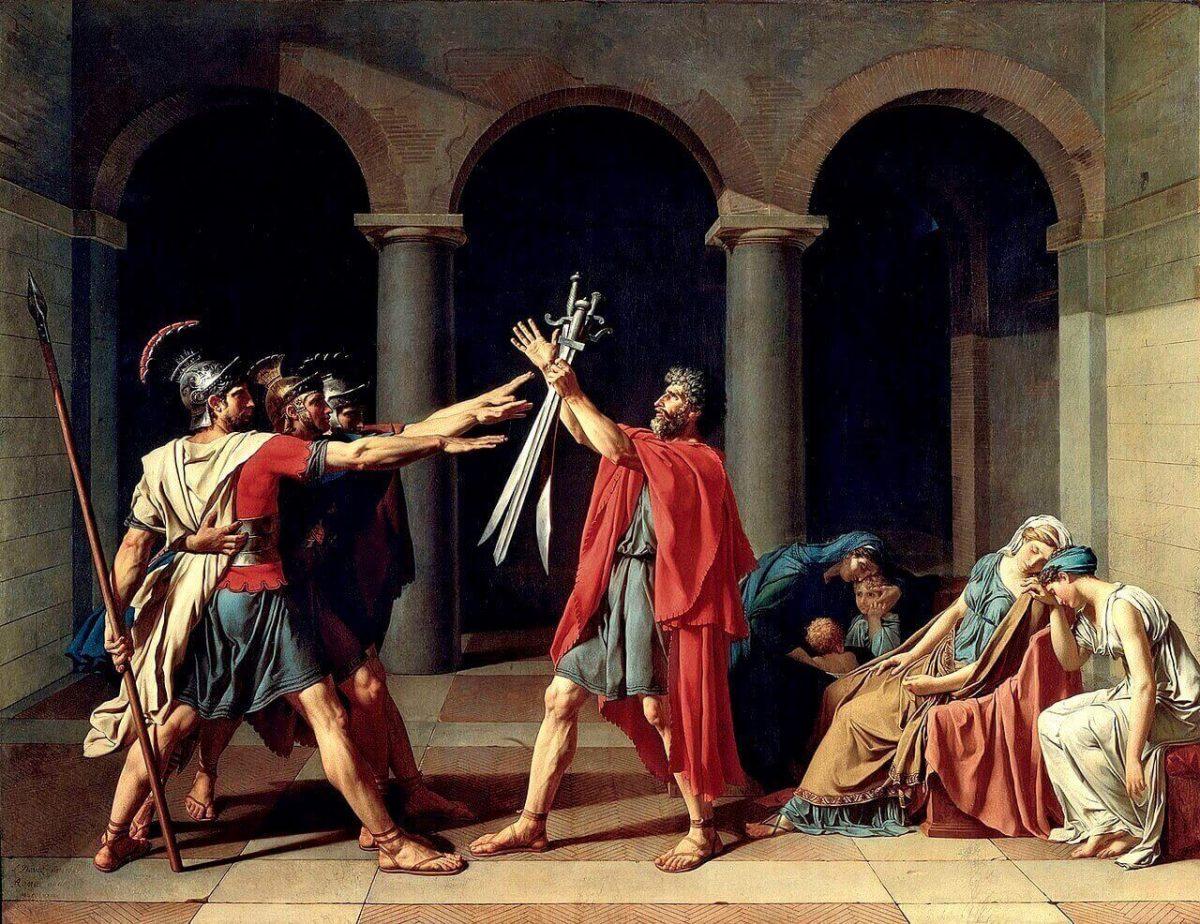
Oath of the Horatii: what is the uniqueness of the masterpiece of Jacques-Louis David
Contents:
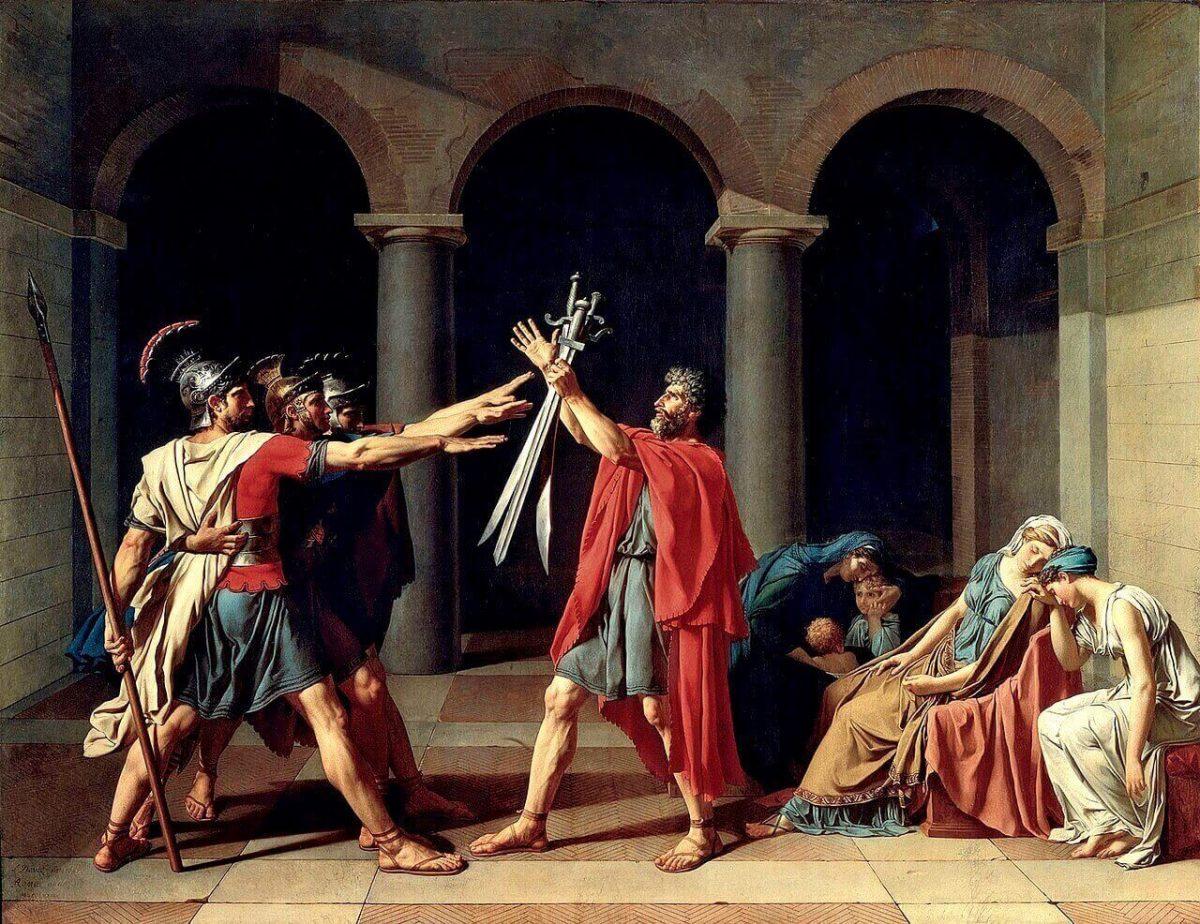
David had no chance NOT to become famous. He created a work that shook the art world.
In 1784, 5 years before the French Revolution, he created the Horatii Oath. He wrote it for King Louis XVI. But she became a symbol of the fearlessness of the revolutionaries.
What makes her so unique? And why did a painting based on a story from the history of the Romans, who lived in the XNUMXth century BC, delight David's contemporaries so much? And most importantly, why on earth does it excite our hearts with you?
The plot of the painting "The Oath of the Horatii"
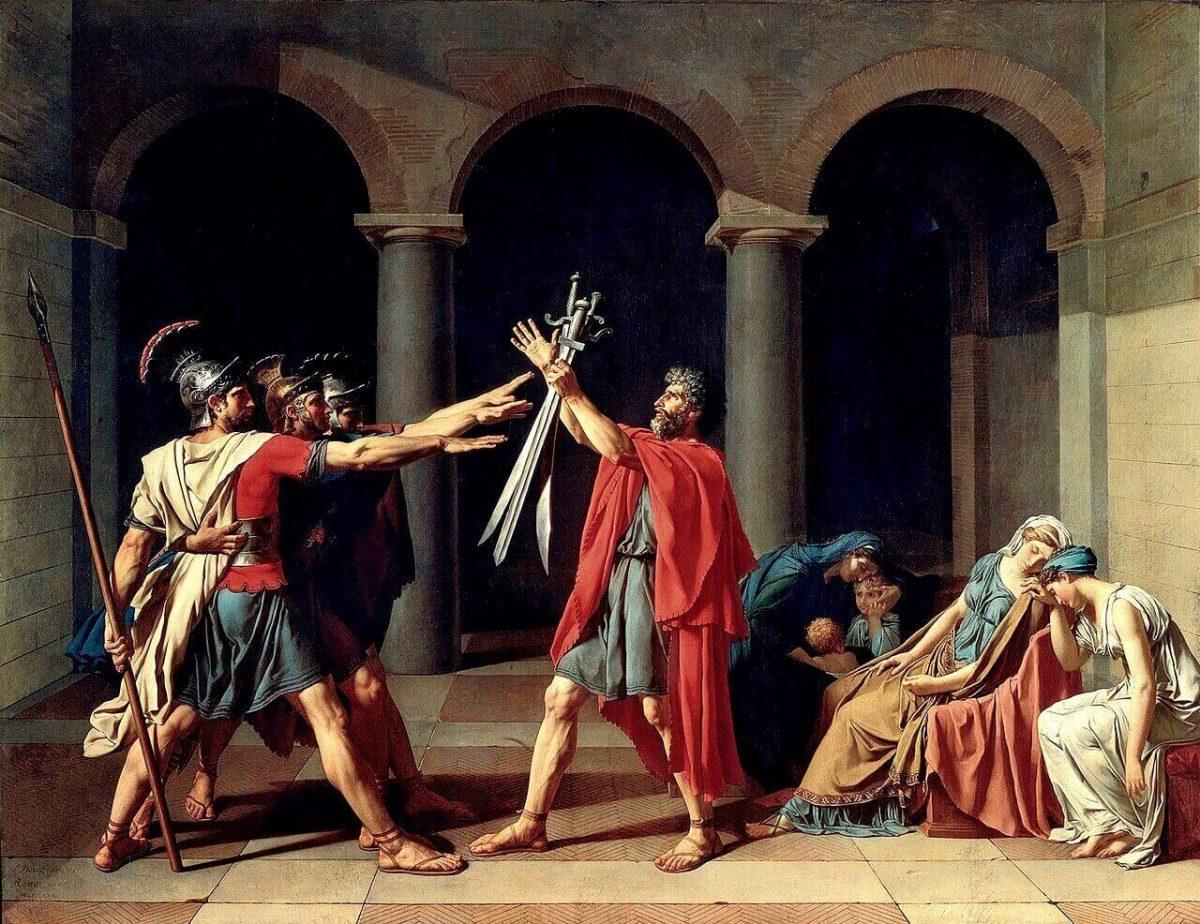
As is usually the case with such paintings, much becomes clear after studying the plot.
David took as a basis the story of the ancient Roman historian Titus Livius.
Once, 25 centuries before, two cities competed: Rome and Alba Longa. Constant attacks on each other weakened them. And at the same time, both also had an external enemy - the barbarians.
Therefore, the rulers of the cities decided to appease their pride and came to an agreement. Let the battle of the best warriors decide their long-standing dispute. And the winner will be the one whose warrior survives the fight.
Three brothers from the Horatii family were chosen from Rome. From Alba Longa, three brothers from the Curiatii family. Moreover, the families were connected by family ties. And the brothers were cousins to each other.
And so David depicted how the brothers of Horace swear to their father to win or die. Moreover, this scene is not in the history of Titus Livius.
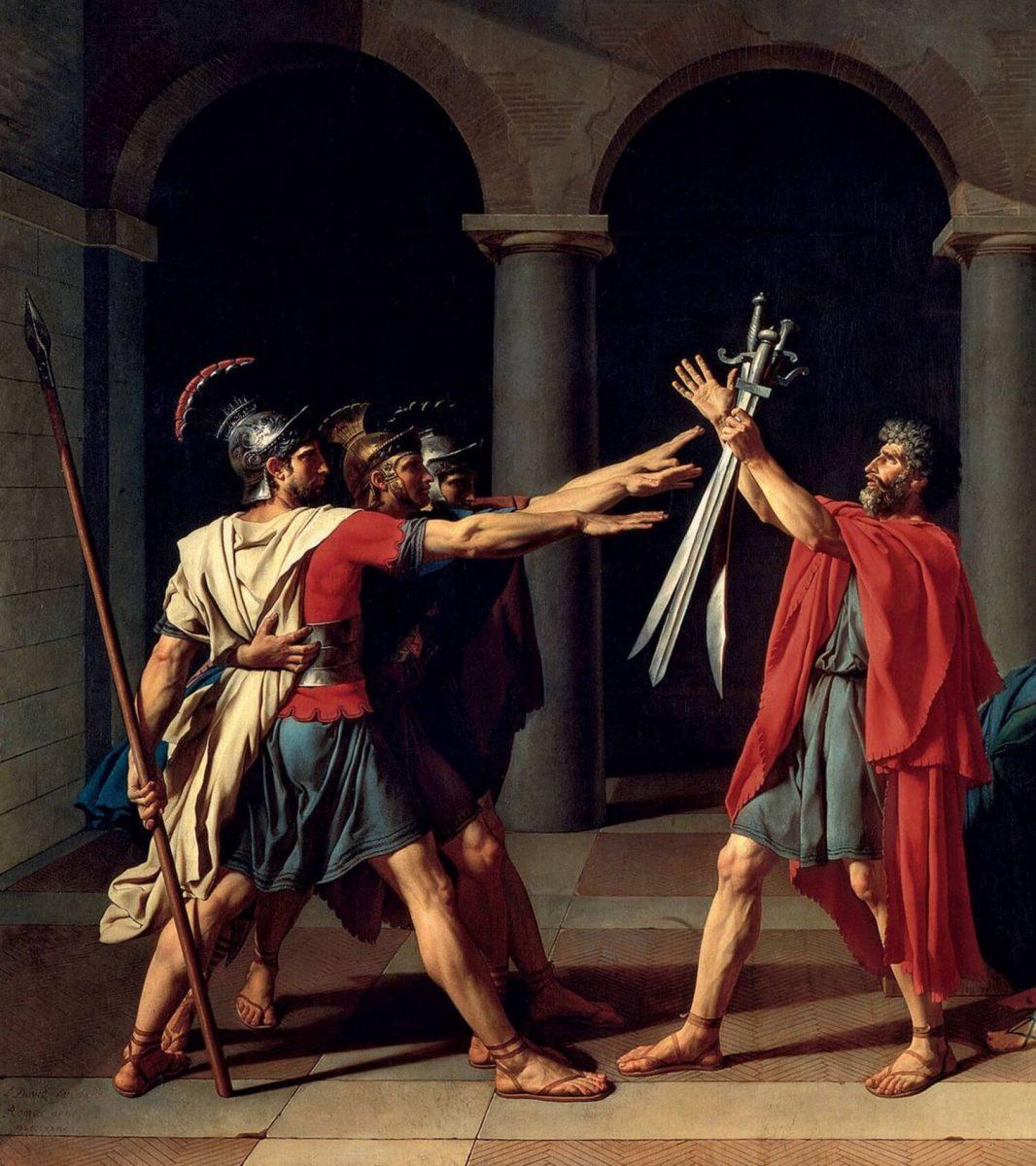
However, it is this scene invented by David himself that very accurately shows the worldview of the ancient Romans. Duty to the Motherland is more important than duty to the family. The task of a woman is to obey, and a man is to fight. The role of the Warrior is more important than the role of Husband and Father.
It really was. Ancient Roman women had no right to interfere in this order of things. And in the picture of David this is very well reflected.
Hero men. All their muscles are tense. They are standing and ready to fight. Their oath to save Rome sounds very loud. And it doesn't matter to them that their children will be left without fathers, wives without husbands, parents without their sons.
In any case, the family will suffer losses, serious losses. And no one is ready to do anything. Duty to Rome is more important.
We see three weak-willed and suffering women who understand this. But they can't do anything...
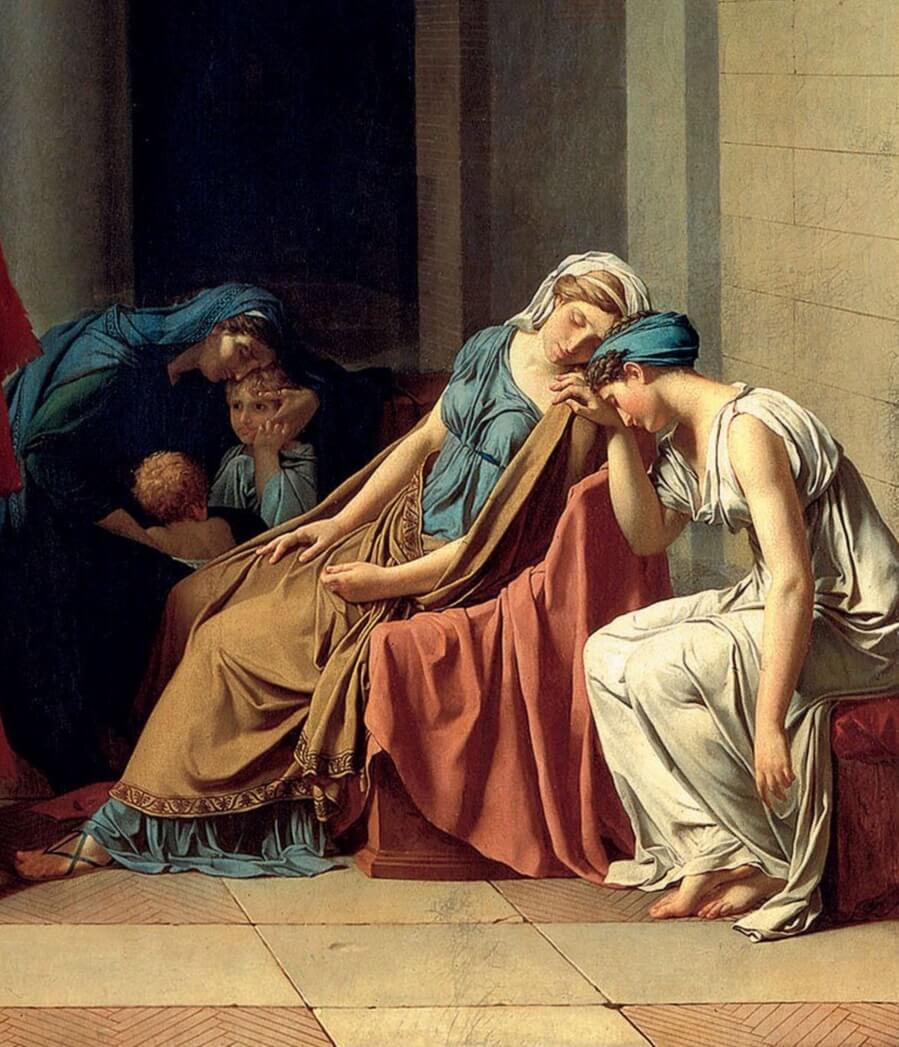
The mother of the brothers hugs her grandchildren. These are the children of one of the standing warriors. His wife sits closer to us. And she is the sister of one of the brothers... the Curiatii.
Therefore, we are talking about the upcoming destruction of two families, and not one. This woman will either have a brother or a husband. Most likely both.
In the middle we see Camilla, the sister of the Horatii brothers. She is engaged to one of the Curiatii brothers. And her grief knows no bounds. She, too, will lose either her fiancé or her brothers. Or maybe everyone.
But do not think that the Horace brothers are ready to fight, because such is the duty and one cannot disobey the father. And deep down they are torn by doubts. They also grieve about the possible eternal separation from their mother, wife, sister. Their father asks them to swear, and he himself thinks: “Why do I need all this? These are my children."
No. The tragedy is that it doesn't. After all, we know the continuation of this story. What will happen to these people further, after this oath ...
The battle will take place. Only one of the Horatii will survive. Rome rejoices: he won.
The warrior returns home. And he sees that his sister Camilla is mourning her dead fiancé, who died from the Curiatian family. Yes, she couldn't hold back her tears. She loved him. For her, it is more important than Rome.
Her brother was overcome with anger: how dare she put love for a man above love for Rome! And he killed his sister.
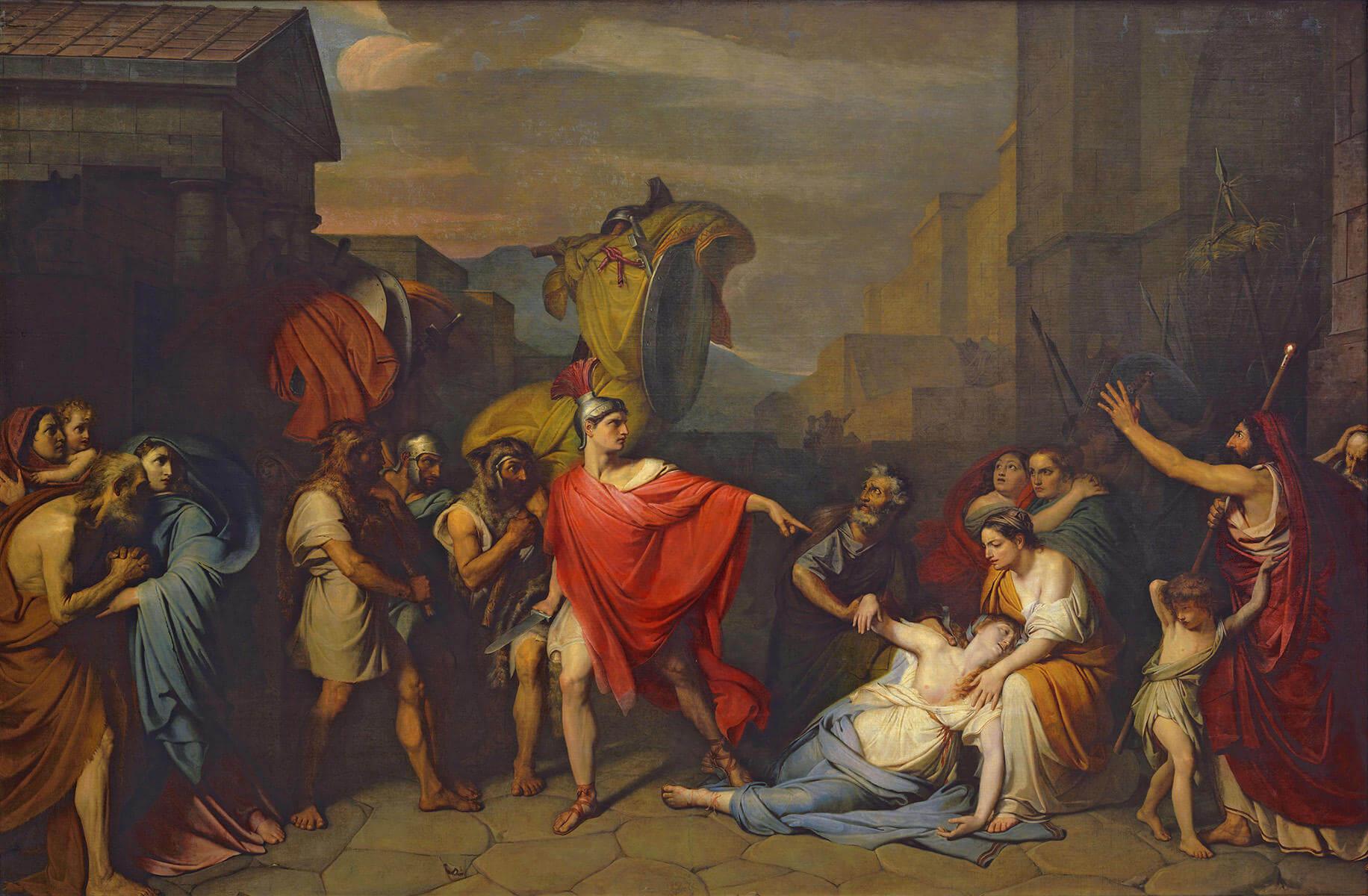
Warrior decided to judge. But his father, whose daughter was Camilla, spoke out in his defense! He asks the court to forgive Horace, as he put duty to the Motherland above love for his sister. And he was right to kill her...
Yes, different times, different customs. But then we will realize that we have something in common with them. In the meantime, I propose to see who David drew inspiration from and what is the uniqueness of his work.
Who inspired Jacques Louis David
David contrasted masculine strength and fighting spirit with feminine softness and affection for the family.
This very strong contrast is inherent in the very composition of the picture.
The male "half" of the picture is all built on straight lines and sharp corners. Men are stretched out, swords are raised up, legs are apart. Even the views are direct, piercing space.
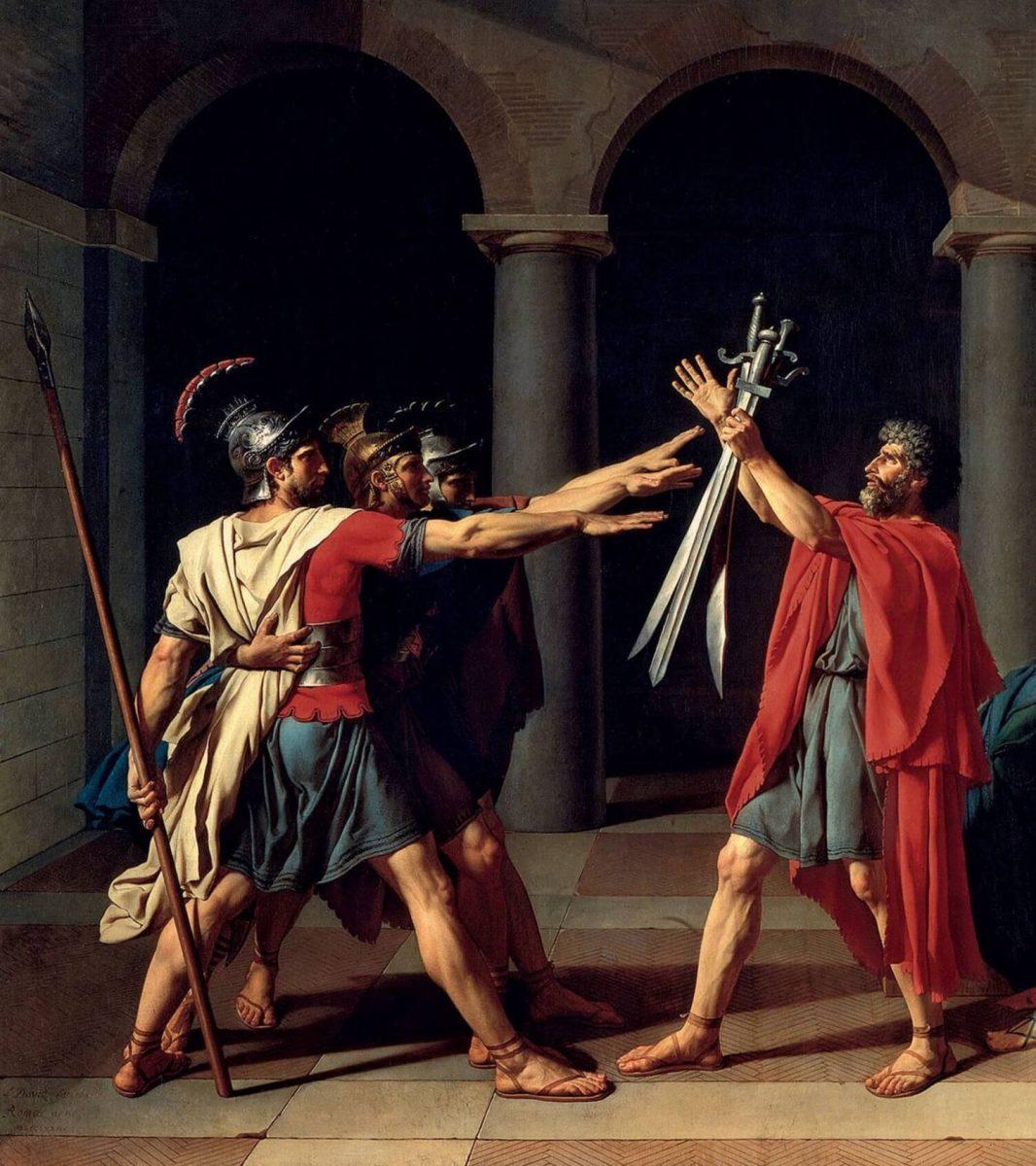
And the female "half" is fluid and smooth. Women sit, reclining, their hands are written in wavy lines. They are visually lower and, as it were, in a subordinate position.
We also see colors. The clothes of men are bright colors, women are faded.

At the same time, the space around is ascetic and ... masculine. Floor tiles and arches with austere Doric columns. David, as it were, emphasizes that this world is subject to the male will. And against such a background, the weakness of women is even more felt.
For the first time, Titian began to use the effect of depicting opposites in his works. 2,5 centuries before David.
The Renaissance master used a particularly striking contrast between the beautiful and the ugly in his paintings with the beautiful Danae and the disgusting maid.
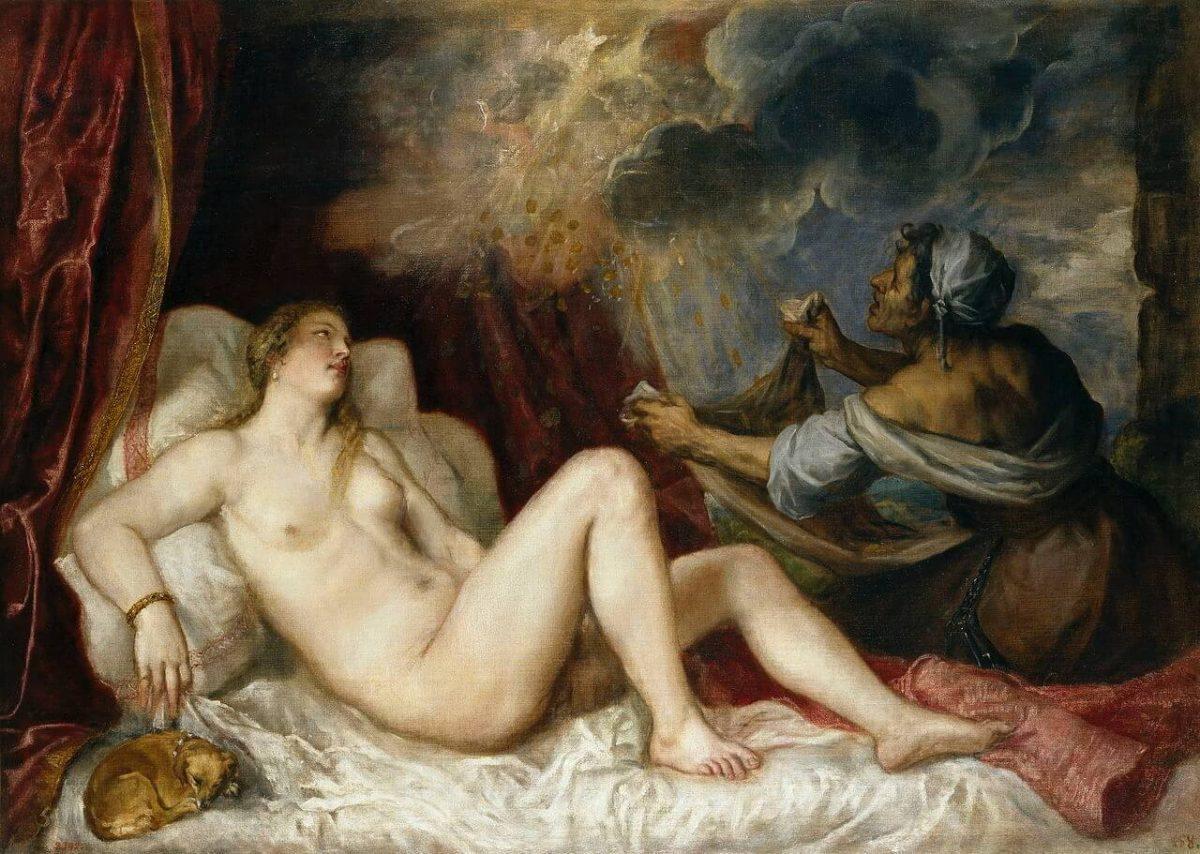
Of course, it was not without the influence of Poussin, who created the style of classicism back in the 1,5th century, XNUMX centuries before David.
We can even meet Roman soldiers with him, who clearly inspired David with their poses to create the “Oath of the Horatii” (in the lower left corner).
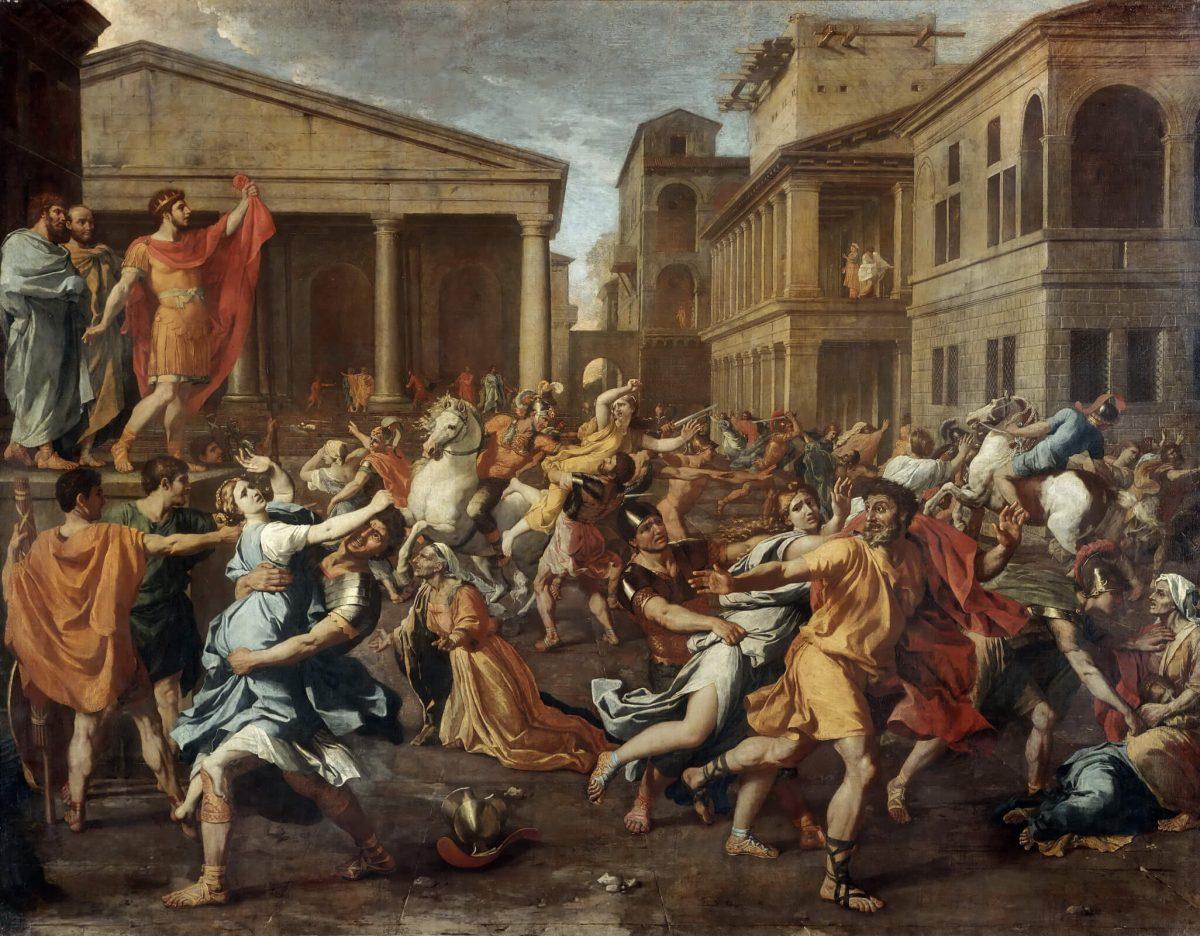
Therefore, the style of David is called neoclassicism. After all, he builds his paintings on the picturesque heritage of Poussin and the worldview of the ancient world.

Prophecy of David
So, David continued the work of Poussin. But between Poussin and David lay an abyss - the Rococo era. And she was the complete opposite of neoclassicism.
The "Oath of the Horatii" turned out to be a watershed between two worlds: male and female. The world of love, entertainment, easy being and the world of blood, revenge, battle.
David was the first to feel the coming change of epochs. And he placed tender women in an uncomfortable, strict male world.
This is what was in painting before the "Oath of the Horatii". Just those very streamlined and wavy lines: flirting and laughter, intrigue and love stories.
» data-medium-file=»https://i1.wp.com/www.arts-dnevnik.ru/wp-content/uploads/2020/10/3F3613F8-C7B2-4BC6-BFD9-7F005B37ACD0-scaled.jpeg?fit=595%2C655&ssl=1″ data-large-file=»https://i1.wp.com/www.arts-dnevnik.ru/wp-content/uploads/2020/10/3F3613F8-C7B2-4BC6-BFD9-7F005B37ACD0-scaled.jpeg?fit=900%2C990&ssl=1″ loading=»lazy» class=»wp-image-17419 size-medium» title=»Клятва Горациев: в чем уникальность шедевра Жака-Луи Давида» src=»https://i2.wp.com/www.arts-dnevnik.ru/wp-content/uploads/2020/10/3F3613F8-C7B2-4BC6-BFD9-7F005B37ACD0.jpeg?resize=595%2C655&ssl=1″ alt=»Клятва Горациев: в чем уникальность шедевра Жака-Луи Давида» width=»595″ height=»655″ sizes=»(max-width: 595px) 100vw, 595px» data-recalc-dims=»1″/>
And this is what happened after: revolution, death, betrayal, murder.
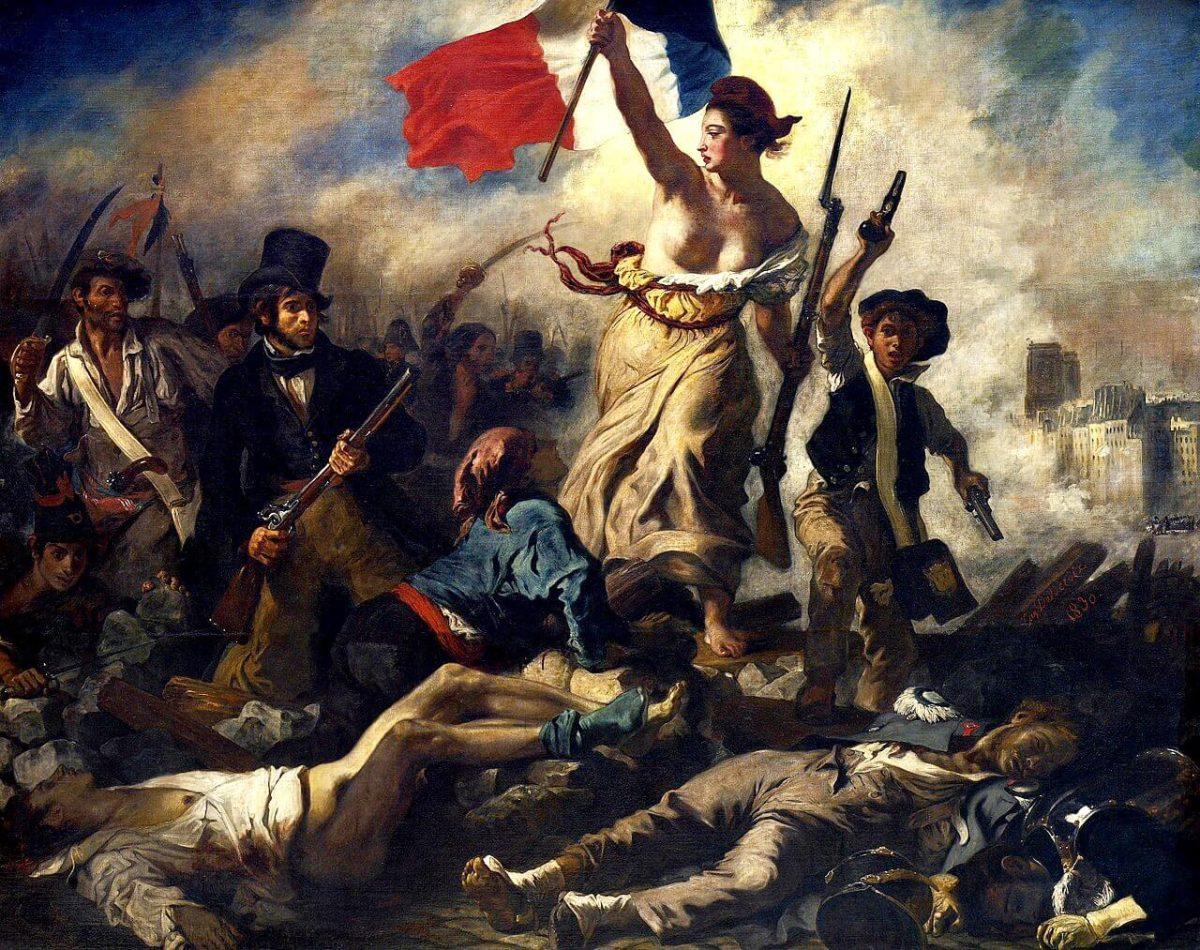
David predicted things to come. There will be a battle and there will be casualties. He showed this on the example of two families: the Horatii and the Curiatii. And 5 years after the painting of this picture, such a misfortune came to almost every family. The French Revolution has begun.
Of course, contemporaries were puzzled. How did David create such a work on the eve of the Revolution? They considered him a prophet. And his painting has become a symbol of the struggle for freedom.
Although initially David wrote it to order for Louis XVI. But this did not prevent him from subsequently voting for the execution of his customer.
Yes, the master was on the side of the revolution. But that doesn't matter. His painting is an eternal prophecy. No matter how hard we try, history is cyclical. And we are faced with a choice again and again.
Yes, our world now recognizes the value of the family. But after all, quite recently we experienced the very horror of choice. When father is against son, and brother is against brother.
Therefore, the picture excites our hearts. We still remember the consequences of a terrible choice. Even according to the stories of our ancestors. Therefore, the history of the Horatii family touches us. Although these people lived 27 centuries ago.
***
Comments other readers see below. They are often a good addition to an article. You can also share your opinion about the painting and the artist, as well as ask the author a question.
Leave a Reply